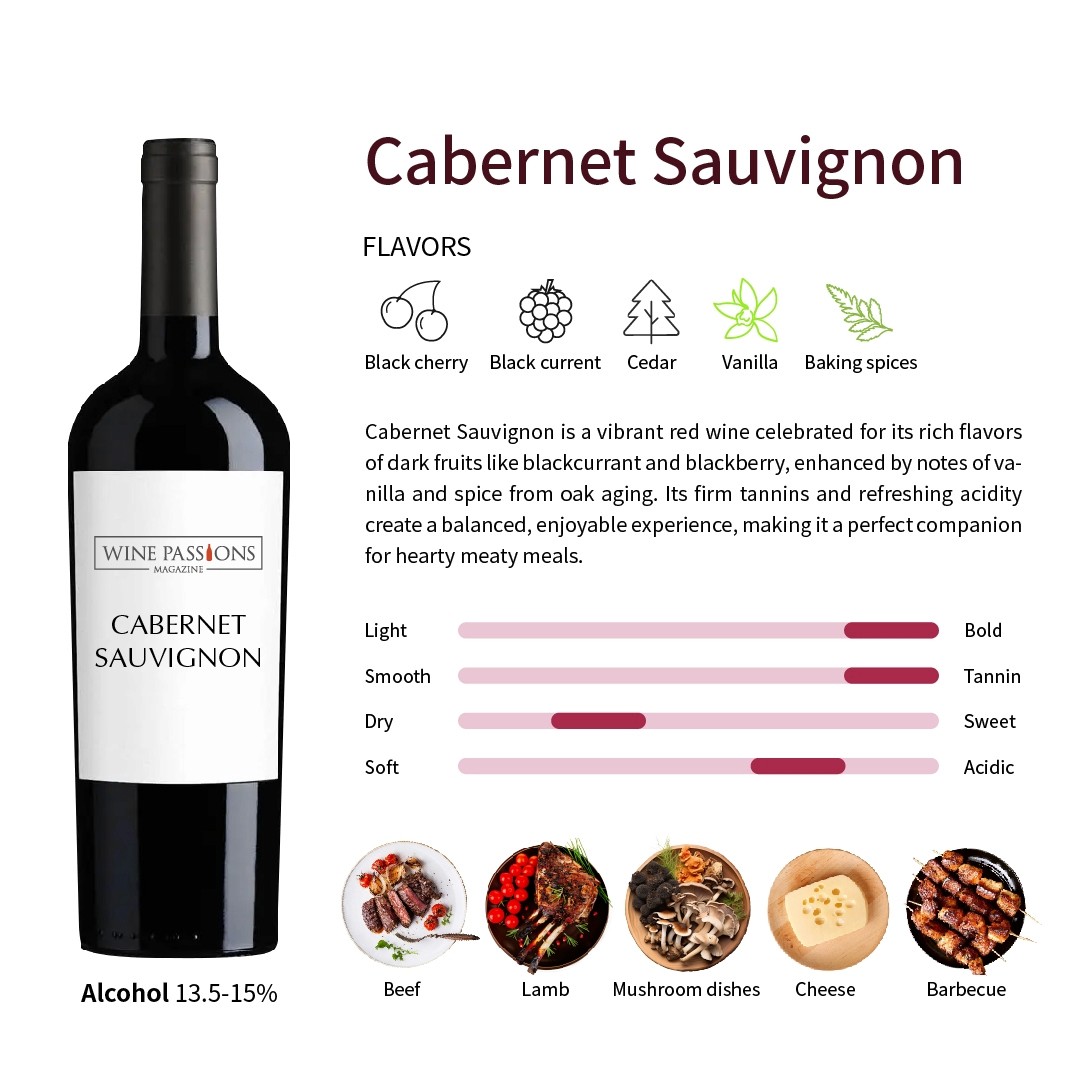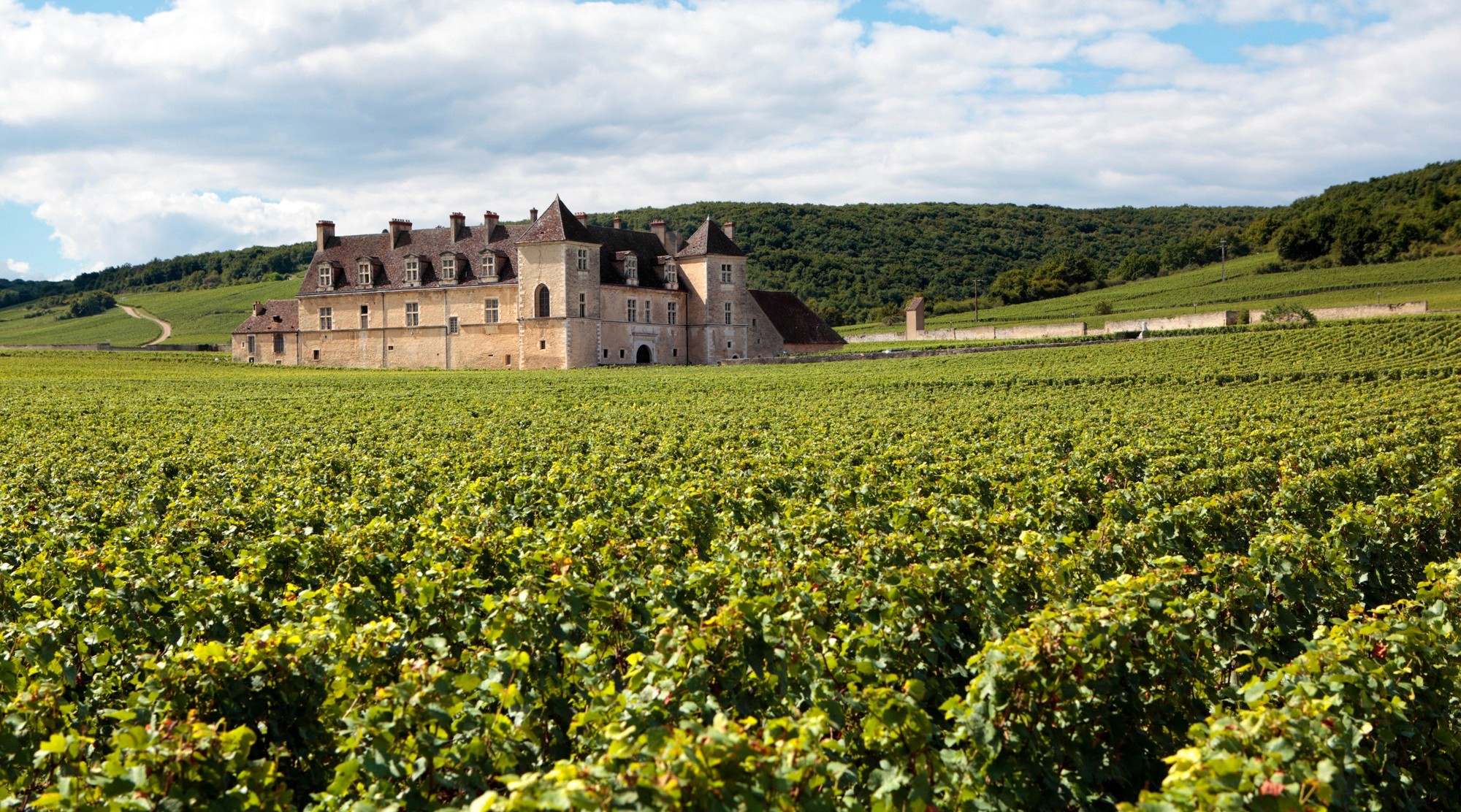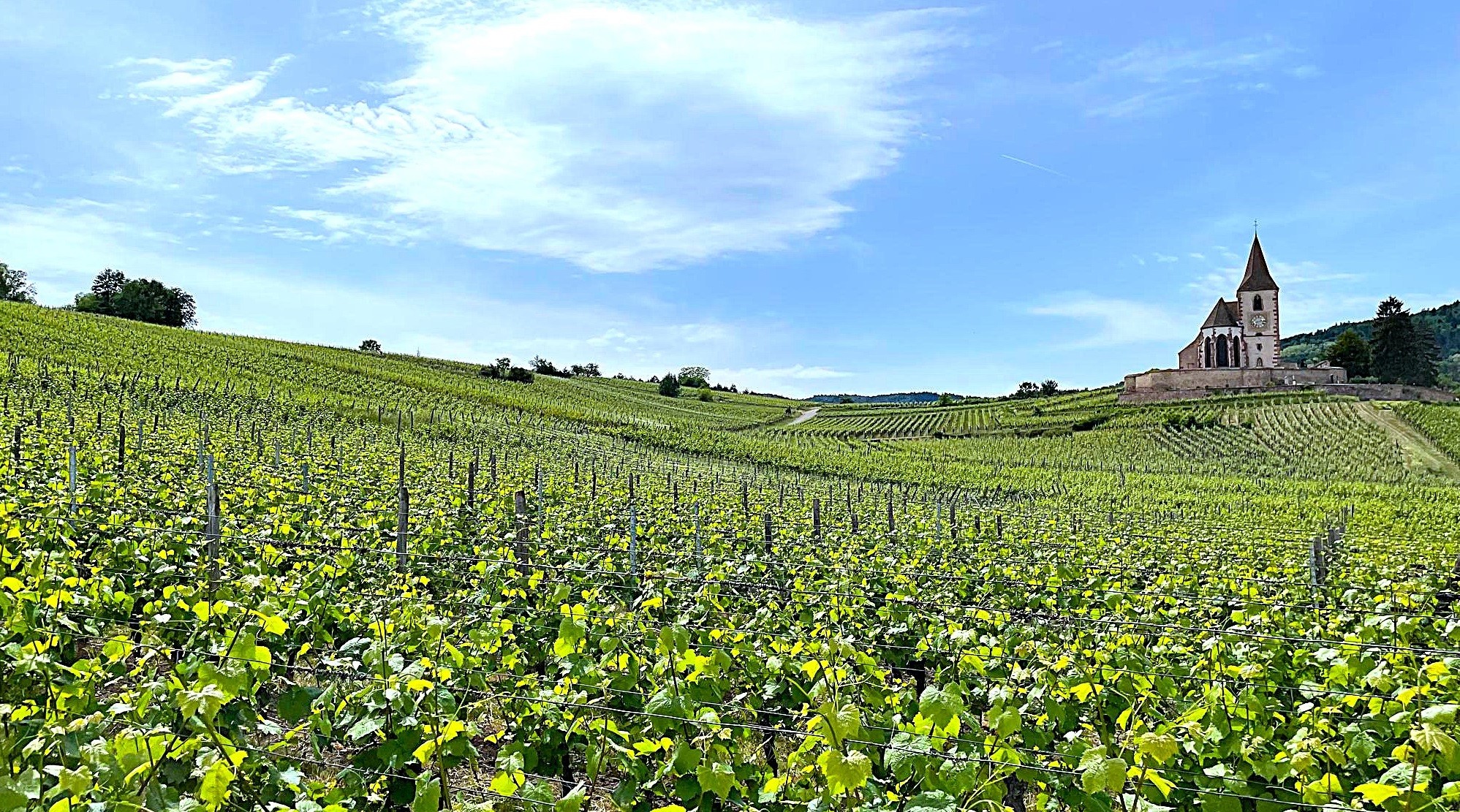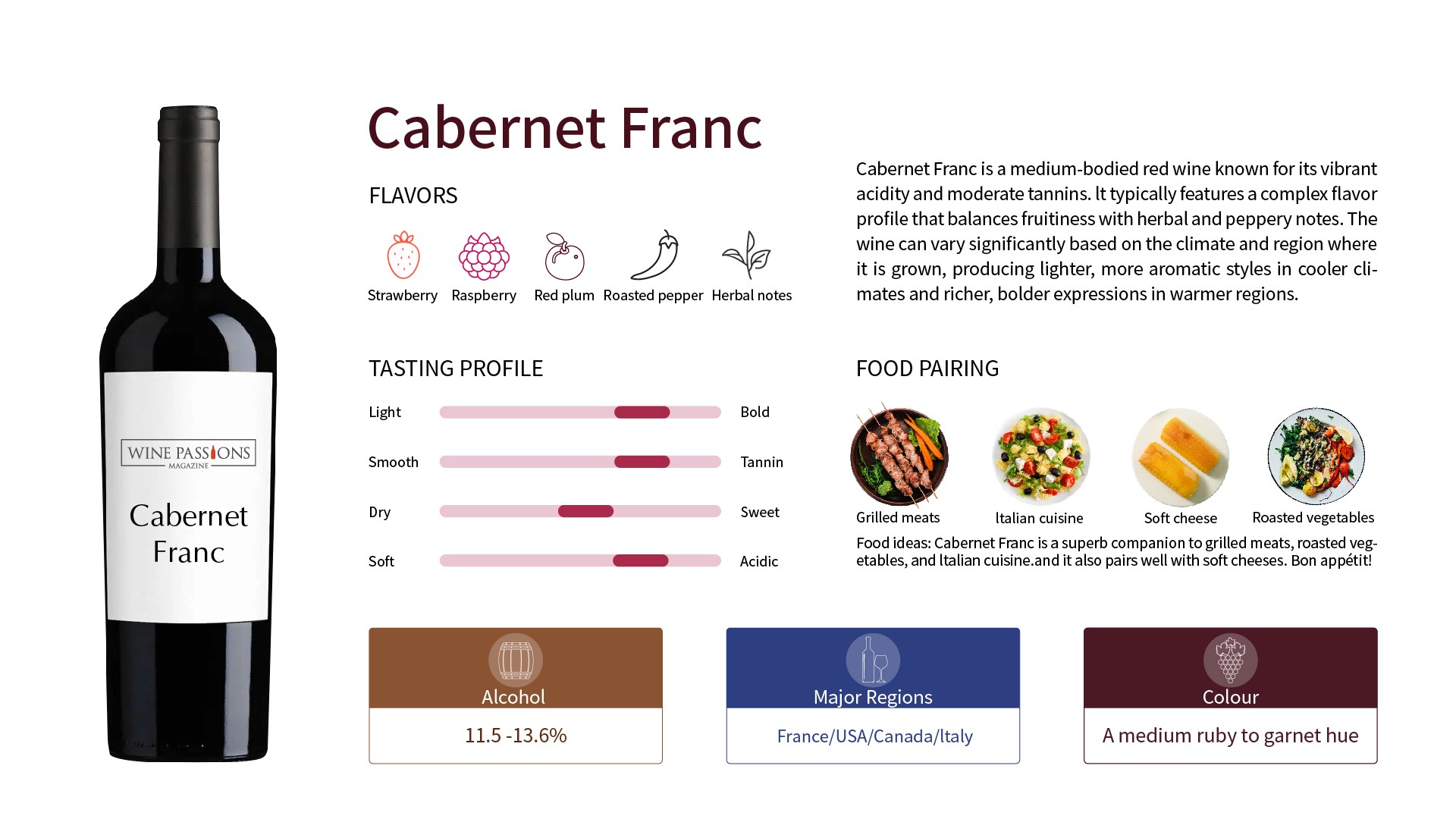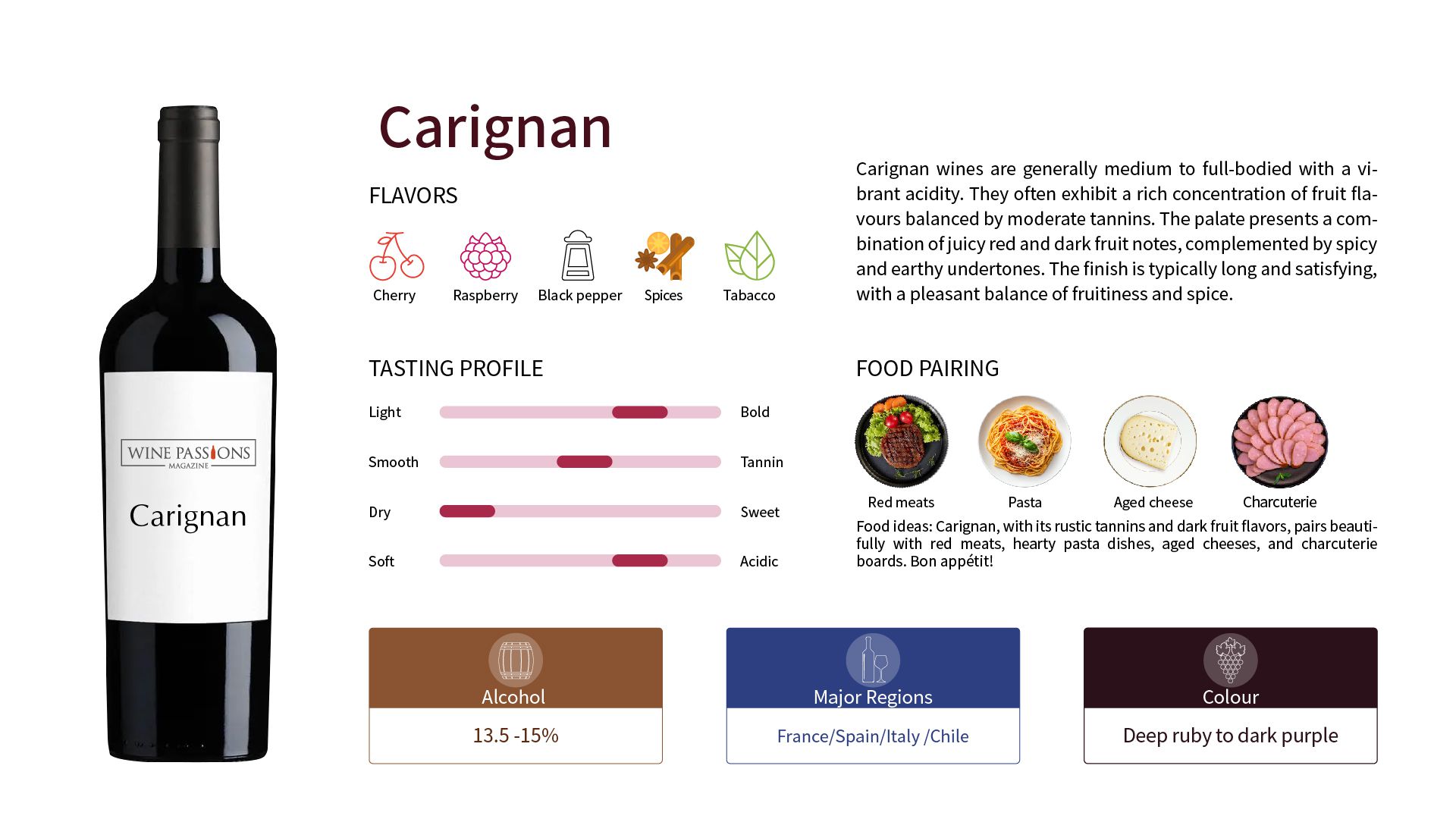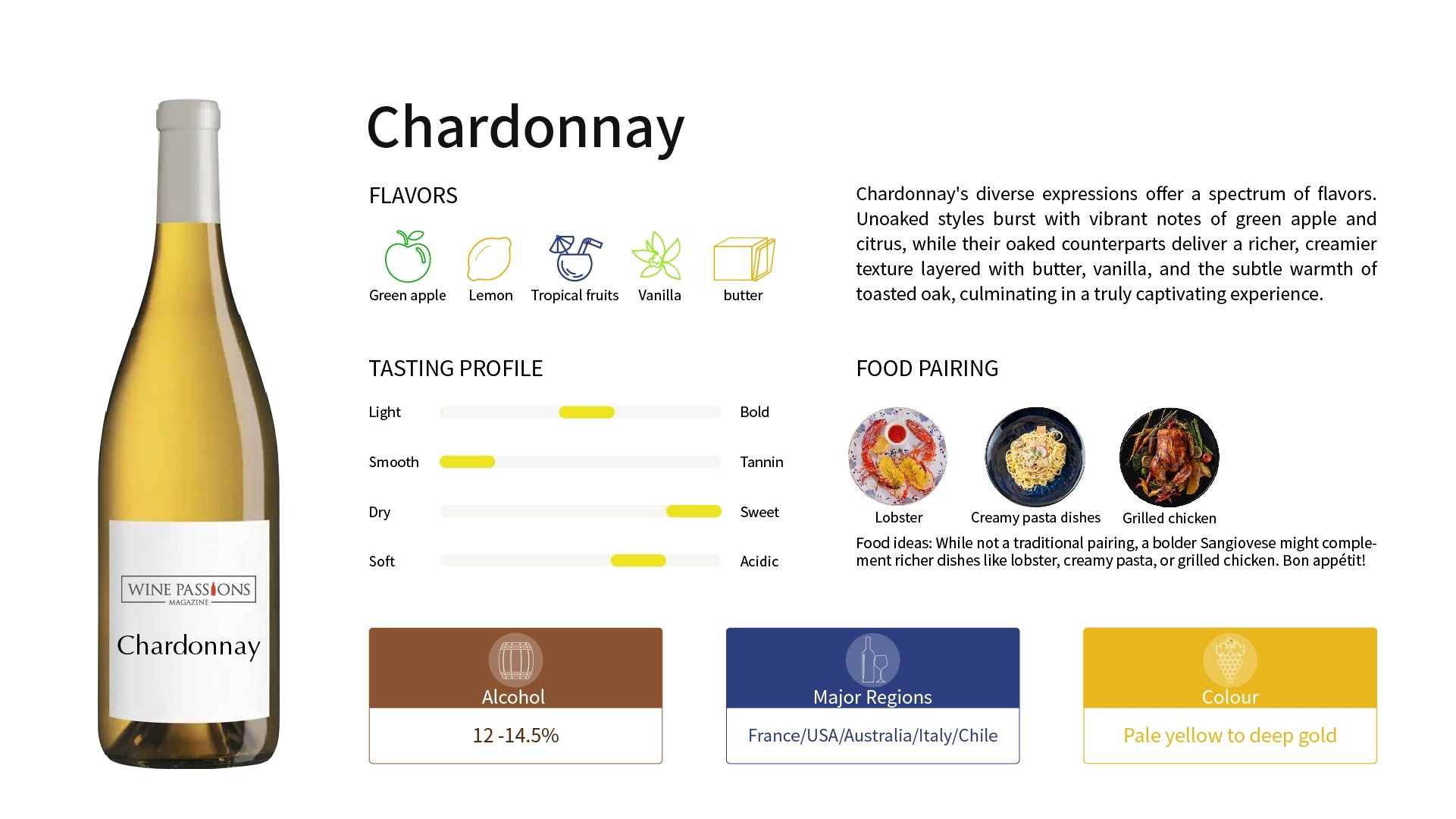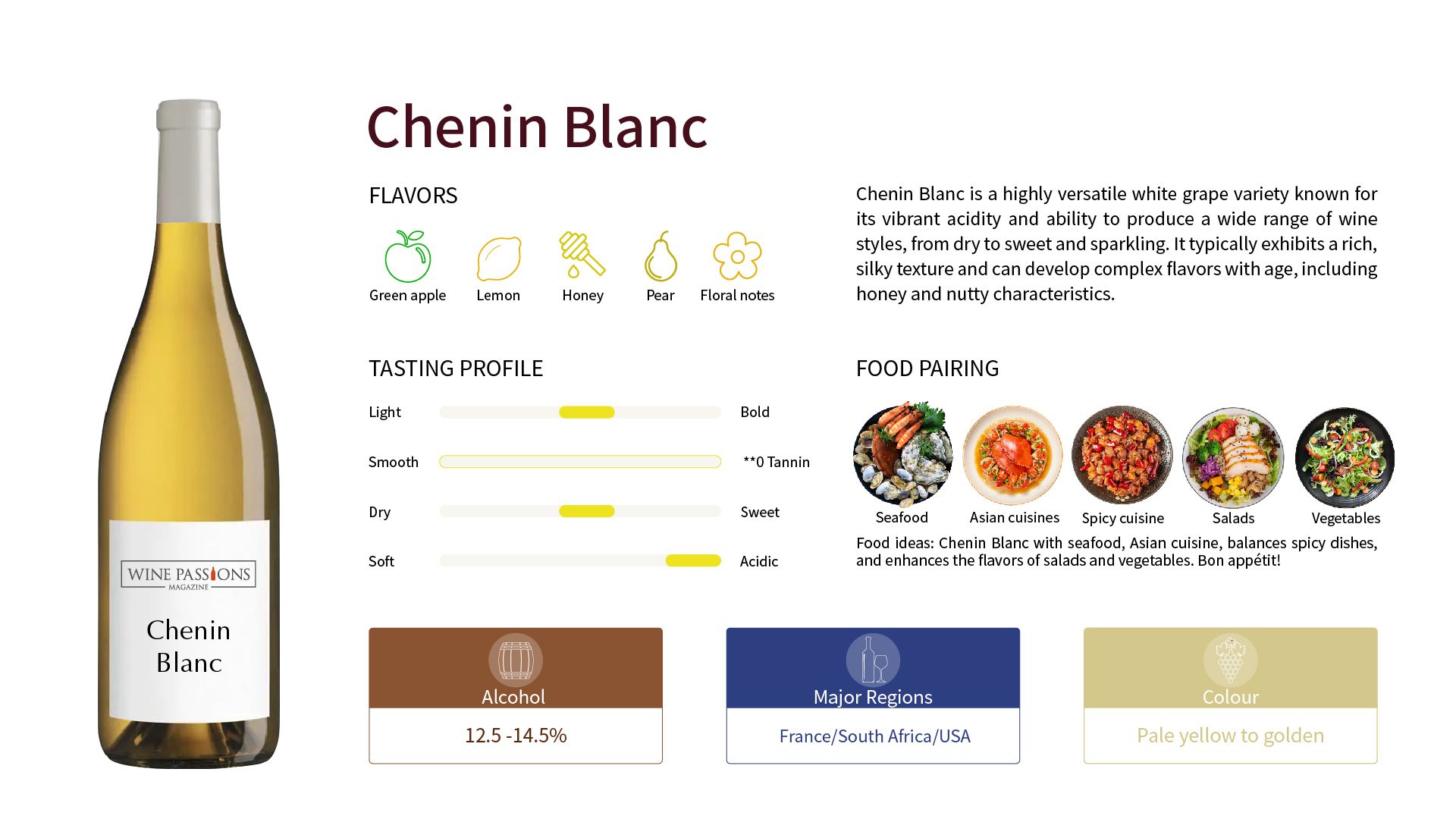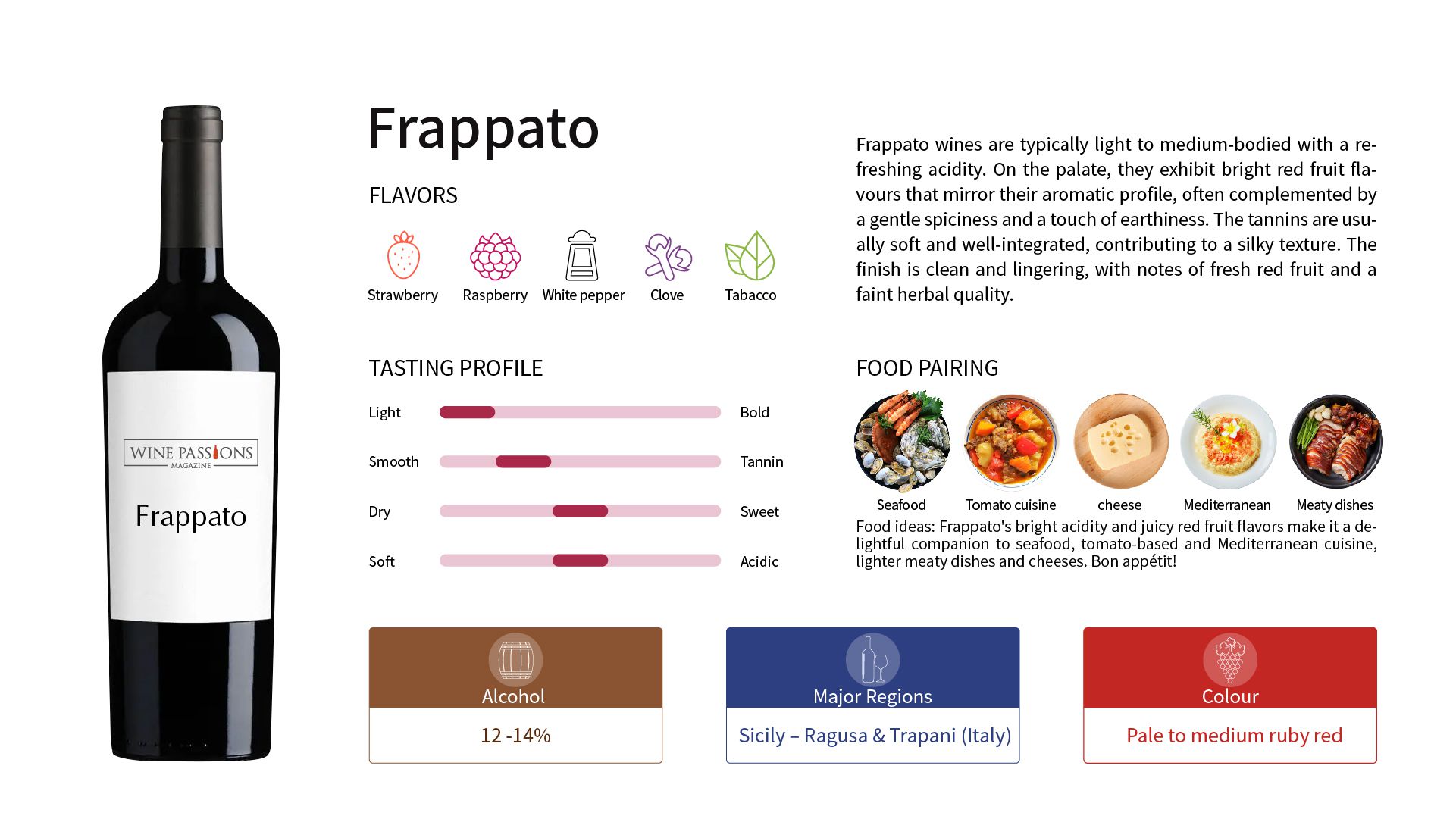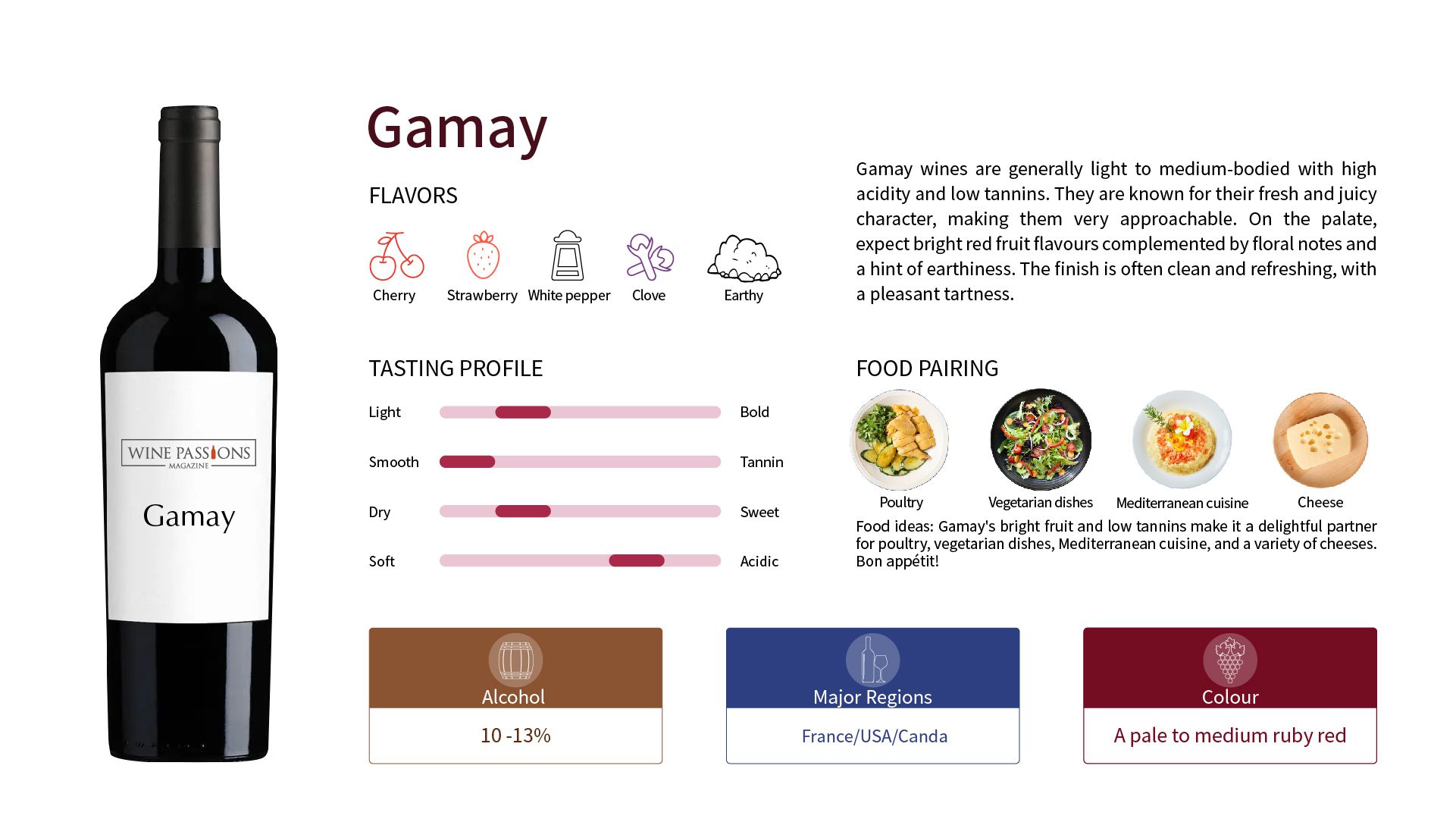Cabernet Franc
Background and Origin
Cabernet Sauvignon originated in the Bordeaux region of France, believed to be a natural cross between Cabernet Franc and Sauvignon Blanc. This discovery was confirmed in 1996 through DNA analysis. Cabernet Sauvignon first appeared in Bordeaux in the 17th century and quickly became an important wine grape variety in the region. Over time, its cultivation has spread to almost all major wine regions around the world.
Pronunciation:
Kab-er-nay So-vi-yawn
Reasons for the Popularity of Cabernet Sauvignon
Diversity: Cabernet Sauvignon is highly adaptable, thriving in both cool and tropical regions, allowing it to be widely cultivated around the world. Different climates and soil conditions give the grapes varying flavors, resulting in unique characteristics for Cabernet Sauvignon from each region. For example, in Napa Valley, the warm climate promotes fruit ripening, yielding rich black fruit flavors; whereas in Bordeaux, the cooler climate helps retain more acidity and structure.
Aging Potential: Cabernet Sauvignon is known for its high tannin and acidity, which allows it to develop more complex flavors as it ages in the bottle. Over time, the tannins in the wine soften, revealing richer aromas such as vanilla, smoke, and leather. This aging potential makes Cabernet Sauvignon a favorite among collectors and often leads to high-value transactions at auction markets.
Consistent Quality: Whether in the Old World or the New World, Cabernet Sauvignon is capable of producing high-quality wines. Its stable flavor characteristics and structure inspire high consumer confidence in its quality. Many renowned wineries, such as Château Margaux in France and Opus One in the United States, are famous for their exceptional Cabernet Sauvignon. These wineries often combine traditional and modern techniques in winemaking, resulting in a final product that is consistent and high-quality.
Market Demand: With increasing consumer demand for high-quality red wine, Cabernet Sauvignon has become a flagship product for many wineries. Demand for this wine continues to grow, especially in North America, Europe, and Asia. According to market research reports, the Cabernet Sauvignon market is expected to keep growing in the coming years, driven mainly by consumers’ increasing interest in premium wines and a rising demand for wine consumption in social settings.
Flavor Characteristics of Cabernet Sauvignon
Fruit Aromas: Primarily includes blackcurrant, blackberry, cherry, and other black fruit aromas.
Spice and Woody Aromas: Commonly found in oak-aged wines with flavors of cedar, vanilla, pepper, and smoke.
Complexity: As it ages, the wine may reveal deeper aromas such as leather, chocolate, and earth.
Major Regions for Cabernet Sauvignon
Bordeaux, France: Especially famous for the Left Bank (such as Médoc), it is an important production area for Cabernet Sauvignon.
Napa Valley, USA: Known for its rich, full-bodied Cabernet Sauvignon.
Chile: Regions such as Maipo Valley and Colchagua Valley produce high-quality Cabernet Sauvignon.
Australia: Regions such as Coonawarra and Margaret River are famous for producing Cabernet Sauvignon that is structured and bursting with fruit flavor.
Famous Cabernet Sauvignon Red Wine
Château Lafite Rothschild (Bordeaux, France)
Château Margaux (Bordeaux, France)
Opus One (California, USA)
Stag's Leap Wine Cellars Cabernet Sauvignon (California, USA)
Concha y Toro Casillero del Diablo Cabernet Sauvignon (Chile)
Tasting Handling
Tasting temperature: 15-20°C
Tasting glass: Extra large wine glass
Aeration time: 1 hour
Aging potential: 10+ years
Food Pairing
Cabernet Sauvignon, with its rich flavors and strong tannins, is very suitable for pairing with the following foods:
Red meats: such as steak, lamb chops, grilled meats, etc.
Rich sauce dishes: such as beef stew in red wine, mushroom sauce, etc.
Aged cheese: such as cheddar or blue cheese.
These pairings can balance the tannins in Cabernet Sauvignon, making the overall taste more harmonious.
